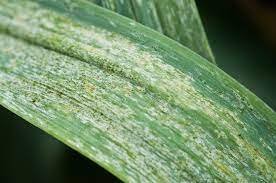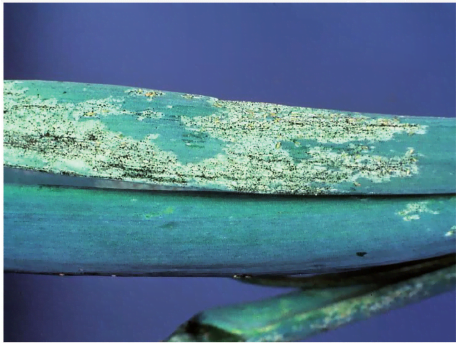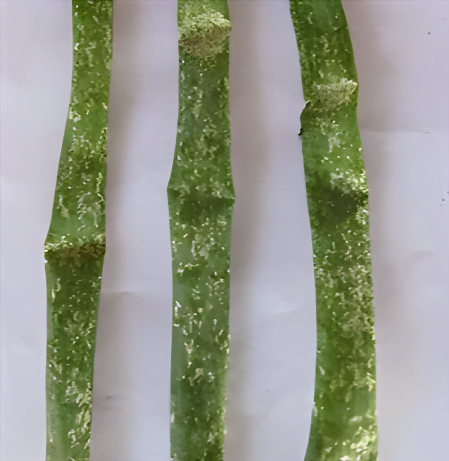Table of contents of the article
ToggleThrips are small insects that attack onion plants, causing leaf damage and a decrease in crop quality. This article from the “WORLD OF PLANTS” website reviews methods of effective prevention and control of thrips on onion plants.
Causes of thrips on onion plants
Disease name: Thrips on onion plants
Scientific name: Thrips tabaci
Type of disease: insect
Disease family: Thripidae
Onion thrips are small insects that range in color from yellow to black. Adults overwinter in crop residues and weeds found in the field.
Symptoms of thrips on onion plants
The initial symptoms of the infection appear on onion leaves in the form of silver lines or white spots, and the onion leaves are wrinkled or curled. As the severity of the infection increases, the tips die and the growth of the leaves slows down.

Thrips development cycle on onion plants
Thrips have rough mouth parts that they use to tear apart plant cells. Adults and nymphs also penetrate the epidermis of onion leaves to feed on plant sap. Thrip damage can also lead to an increase in the appearance of purple spots, as the fungus can penetrate the plant through wounds caused by feeding.
Suitable conditions for the spread of thrips on onion plants
Thrips prefer hot, dry weather to reproduce and spread in crops, as heavy rain can cause them to fall from trees and die.

Losses resulting from the spread of thrips on onion plants
Neglecting the infestation leads to an increase in the number of thrips, which contributes to a decrease in the size of the bulb. It can also lead to the death of the plant and a decrease in crop productivity.
Controlling thrips on onion plants
- Organic control: Removing the remains of plants and harmful weeds found in the field and using straw mulch reduces the severity of the infestation, and the small numbers present on the plant can be eliminated by spraying them with water.
- Chemical control: Use systemic insecticides containing dimethoate when the infestation is severe.

Preventive measures for thrips on onion plants
- Monitor the crop closely especially between the leaf blades to find light yellow thrips nymphs or dark colored adults.
- Use healthy seedlings free of disease.
- Avoid planting onions near alfalfa or wheat because these crops can harbor large numbers of thrips.
- Sterilize agricultural tools before use.
In conclusion, we would like to note that we, at the world of plants website, offer you all the necessary services in the world of plants, we provide all farmers and those interested in plants with three main services::-
- Artificial intelligence consulting service to help you identify diseases that affect plants and how to deal with them.
- Blog about plants, plant diseases and care of various crops ... You are currently browsing one of her articles right now.
- An application that provides agricultural consultations to clients, as well as a service for imaging diseases and knowing their treatment for free – Click to download the Android version from Google Play Store، Click to download the IOS version from the Apple App Store.
Sources:




